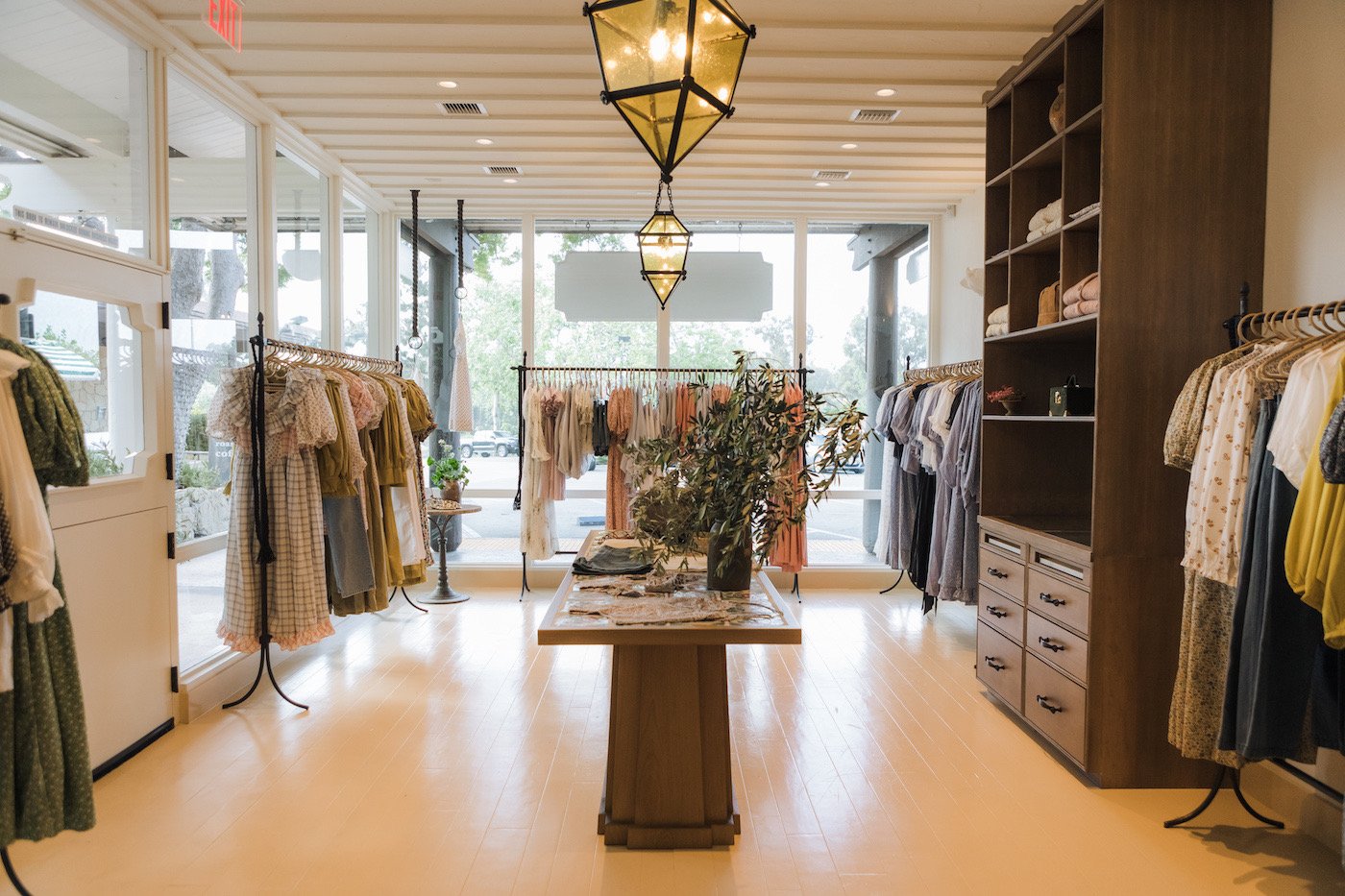Check Out the most up to date Trends in Boutique Fashion for every single Season
Check Out the most up to date Trends in Boutique Fashion for every single Season
Blog Article
Lasting Fashion: How Eco-Friendly Clothes Is Forming the Future of Style
As the fashion business encounters boosting scrutiny over its environmental influence, the increase of lasting fashion supplies an encouraging alternative that lines up style with ecological obligation. Utilizing innovative products such as recycled fibers and plant-based fabrics, alongside advanced methods like electronic and 3D printing, developers are redefining what it indicates to be stylish in the modern-day age. Concurrently, the growing popularity of upcycling and second hand society is cultivating a shift towards a round economic climate. Exactly how does this activity truly influence the future trajectory of style, and what challenges lie in advance in its widespread fostering?
Cutting-edge Lasting Materials
As the style industry grapples with its ecological impact, innovative sustainable materials have actually emerged as a critical solution for decreasing environmental impacts. These materials not only decrease dependency on fossil fuels yet likewise lessen harmful pesticide usage and water intake.
Along with plant-based materials, developments in biofabrication have led to the advancement of lab-grown fabrics. Mycelium leather, acquired from mushroom roots, presents a versatile and naturally degradable alternative to animal natural leather. Its manufacturing results in significantly reduced carbon discharges and water use, making it an extra lasting choice for designer looking for to straighten with environment-friendly techniques.
Recycled materials are additionally obtaining traction, with polyester made from recycled plastic containers representing a considerable breakthrough. This technology not only draws away plastic waste from seas and land fills but also decreases energy usage compared to producing virgin polyester. Together, these products highlight the possibility for a more sustainable fashion industry, paving the way for eco aware design and production.
Eco-Conscious Production
Structure on the developments in sustainable products, the apparel industry is also re-evaluating its production processes to additionally lower ecological effect. Trick methods consist of minimizing water consumption, lowering carbon discharges, and removing harmful chemicals. By embracing closed-loop systems, makers aim to recycle water and energy efficiently, considerably diminishing waste. The assimilation of renewable energy sources, such as solar and wind power, into manufacturing centers even more curtails reliance on nonrenewable fuel sources.
One more vital aspect is the decrease of toxic chemicals traditionally utilized in dyeing and ending up textiles. Eco-conscious manufacturers are shifting towards plant-based dyes and waterless dyeing innovations, which not only protect local ecological communities but also improve employee security. Technologies like digital printing lower fabric waste and power intake, providing a cleaner option to conventional methods.
With the advancement of blockchain technology, companies can now provide comprehensive understandings right into their supply chains, guaranteeing ecologically pleasant and moral practices at each step. As the need for eco-conscious products expands, producers are forced to introduce, making sure that the future of style is both lasting and elegant.
The Increase of Upcycling
Upcycling, a transformative method in sustainable style, includes artistically repurposing discarded products right into new, high-grade items. This cutting-edge approach not only lowers waste yet likewise lessens the need for raw materials, consequently decreasing the environmental influence of clothes production. By reconstructing and reimagining existing products, developers and style brands are able to infuse originality right into their collections while promoting ecological duty.

In addition, the upcycling movement has actually equipped small companies and independent designers, that go to the website usually lead in innovation as a click to read result of their dexterity and creativity. By profiting from the abundant schedule of unused products, these entities contribute to a circular economic situation, demonstrating that fashion can be both lasting and trendy. With upcycling, the industry takes significant strides in the direction of an extra conscious and liable future.
Thrift Society's Effect
The burgeoning second hand culture considerably reshapes the landscape of sustainable fashion, stressing the importance of mindful intake. This cultural change motivates customers to embrace previously owned apparel, thus minimizing the demand for brand-new garment production and reducing environmental impact. Second hand shopping not just extends the lifecycle of clothes however also reduces the carbon impact related to production, carrying, and disposing of clothing.
A crucial aspect of second hand society is its democratization of style. By supplying a wide selection of designs from numerous ages at budget-friendly prices, thrift shops make fashion easily accessible to a wider target market. This availability promotes a feeling of uniqueness and imagination, as consumers mix and match one-of-a-kind pieces to curate customized wardrobes without adding to the quick style cycle.
Furthermore, thrift culture advertises circularity in style, straightening with the concepts of a circular economic situation. As even more consumers and developers accept thrift society, the style sector is urged to adjust, integrating sustainable techniques to satisfy the growing need for eco-conscious options.

Future Trends in Style
Fashion's advancement is significantly formed by technical innovations and sustainability-driven campaigns. As customers become more eco mindful, the industry is reacting with groundbreaking developments that redefine the future of design. One noticeable fad is the surge of digital style, where online garments can be worn why not check here in enhanced truth settings, significantly decreasing fabric waste. This change not only caters to the digital-savvy consumer however also lessens the environmental impact typically connected with garment production.
Additionally, the combination of blockchain modern technology supplies brand-new opportunities in transparency and traceability, enabling consumers to confirm the sustainability credentials of their clothing. boutique fashion. This makes sure accountability in supply chains and advertises ethical sourcing techniques. 3D printing is yet another development that promises to revolutionize producing processes by allowing on-demand production, therefore decreasing excess stock and waste
In addition, the growth of bio-fabricated materials, such as lab-grown leather and plant-based textiles, offers sustainable alternatives to typical materials. These technologies lower reliance on pet items and resource-intensive plants. As these innovations grow, they are positioned to transform the style landscape, merging style with sustainability. The future of fashion, for that reason, depends on a seamless blend of modern technology, advancement, and environmental responsibility.
Verdict
The change of the garment industry via sustainable practices indicates a crucial shift towards ecological accountability. The combination of cutting-edge products, eco-conscious manufacturing strategies, and the embracement of upcycling and second hand society emphasizes a dedication to lowering ecological footprints. As these techniques get momentum, they redefine the market's story by focusing on moral and sustainable options. This evolution not only lines up fashion with ecological sustainability however also establishes a criterion for future patterns focused on obligation and development.
As the fashion sector faces raising scrutiny over its environmental impact, the surge of lasting style offers an encouraging alternative that aligns style with environmental obligation.As the style market grapples with its ecological influence, cutting-edge lasting products have actually arised as a vital solution for decreasing environmental impacts. With each other, these materials underscore the potential for a more sustainable fashion market, paving the way for environmentally aware design and production.
Structure on the innovations in lasting products, the style industry is additionally re-evaluating its manufacturing procedures to further lower ecological influence. boutique fashion.Upcycling, a transformative method in sustainable style, involves artistically repurposing disposed of products into brand-new, top notch products
Report this page